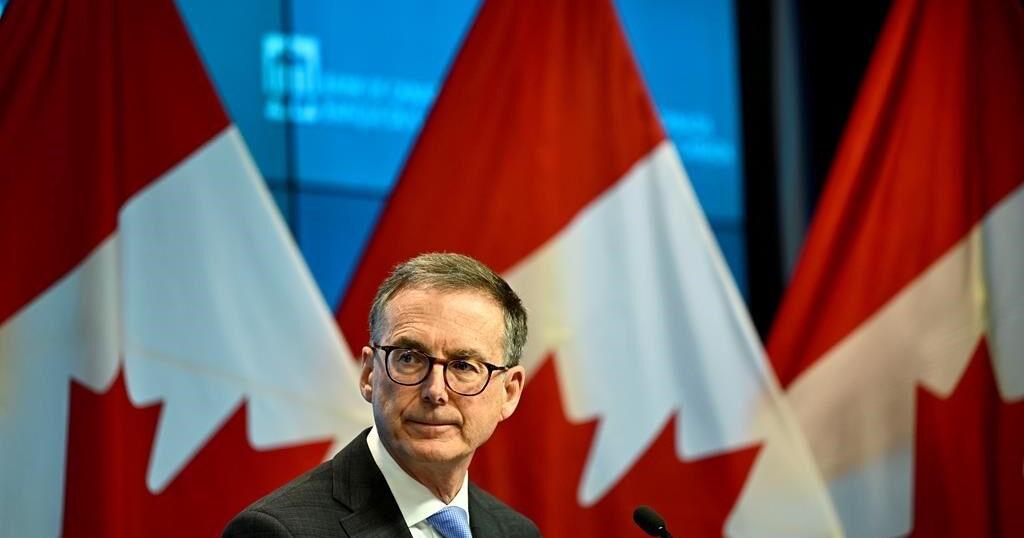Here is a roundup of stories from CanadaNewsMedia designed to bring you up to speed…
StatCan to release July inflation report today
Statistics Canada is set to publish its July consumer price index report today.
Economists polled by Reuters expect the report to show inflation slowed to 2.5 per cent from 2.7 per cent in June.
Price pressures in Canada have steadily eased this year, bringing the annual inflation rate below three per cent since January.
The Bank of Canada has been encouraged by this progress and lowered its key interest rate at its last two decision meetings.
Governor Tiff Macklem has signalled more rate cuts are coming, as long as inflation continues to slow.
Here’s what else we’re watching…
A look at what’s in the news for today
Kamala Harris made a surprise appearance on the first night of the Democratic National Convention in Chicago to honour the legacy of Joe Biden before the president figuratively passed the baton of party leadership to his vice-president.
“Thank you for your historic leadership, for your lifetime of service to our nation and for all you will continue to do,” Harris said about Biden to roars of cheers from supporters.
Biden’s speech rang more celebratory than bittersweet, capping off the Monday night event.
Just over a month ago it was all but certain he would be on stage to accept the nomination. Biden stepped aside in July amid concerns about his age and ability to win.
Pausing numerous times to cheers of “Thank you Joe,” the president gave an energized speech about bringing back jobs, supporting unions and strengthening environmental policies.
Biden critiqued the Democrat’s presidential rival, Donald Trump, as a liar and danger for the future of America. But the president closed out his comments by fulsomely supporting his vice-president and quoting one of his favourite songs saying “America America I gave my best to you.”
“I am more optimistic about the future than I was when I was elected as a 29-year-old United States senator. I meant it,” Biden said.
“Folks, we just have to remember who we are. We are the United States of America and there’s nothing we cannot do when we do it together.”
The four-day convention’s theme is “For the People, For Our Future” and observers say it is a key moment for Democrats to unify the party and build on the excitement behind the Harris campaign.
Alberta school cellphone ban rollout sparks worry
The head of the Alberta Teachers’ Association says the rollout of new policies banning cellphone use in classrooms starting this fall has some teachers confused about how they’ll be expected to follow them.
President Jason Schilling said about two weeks before most kindergarten to Grade 12 students go back to class, it’s unclear why new provincial standards will be in place for Sept. 1, while school divisions have until Jan. 1 to put their own policies and procedures on the books.
Alberta has previously allowed school boards to decide whether or not to restrict cellphones, but Schilling said for those teachers in schools who don’t yet have such rules, there’s concern.
Education Minister Demetrios Nicolaides announced in June that personal devices will need to be turned off and stored out of sight during class time, with exceptions for specialized learning or medical needs.
In a statement to The Canadian Press, Nicolaides said while the ban takes effect in the fall, he’s leaving it up to local school authorities to finalize their own policies by the new year.
B.C. police drop surnames in missing person alerts
The department that polices Greater Victoria’s largest municipality recently moved to exclude surnames from public alerts requesting help finding missing people, in a bid to avoid causing them future harm.
In so doing, it joins a growing number of law enforcement agencies across Canada, and has drawn praise from British Columbia’s privacy commissioner.
Others, including the RCMP, continue to publicize surnames, citing a need for clarity.
The Toronto and Calgary police services moved to first-name-only missing persons reports earlier this year.
The shift has the support of B.C.’s information and privacy commissioner.
Strains mean ‘delicate balance’ on MP protection
The demands of protecting parliamentarians and other public figures are placing “significant strain” on RCMP personnel and taking resources from other federal policing priorities, warns an internal briefing note.
The national police force is “forced to walk a delicate balance” in providing protective services in response to threats flagged by parliamentarians, says the newly released February memo.
“The limited capacity of the RCMP’s protective services must be prioritized based on these assessments.”
The briefing note, obtained from the RCMP through the Access to Information Act, was prepared for a meeting of the deputy ministers’ protection committee, co-chaired by the national security and intelligence adviser and the deputy minister of Public Safety Canada.
The note, one of a series of early 2024 memos released under the access law, emerges amid ongoing concerns about shielding MPs, senators and other prominent figures from a rising tide of online vitriol and physical threats.
This report by The Canadian Press was first published Aug. 20, 2024.

























